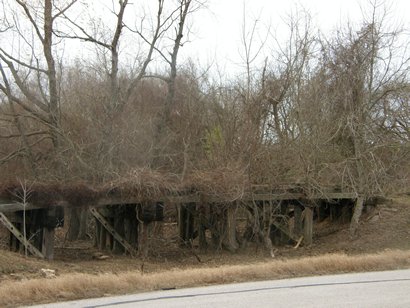|
|
Bonus City Limit
TE Photo, January 2010 |
History
in a Pecan Shell
The
town was the result of a plantation and a railroad. Business partners
Eldridge and Dunovant owned a plantation here and it became the terminus
of the Cane Belt railroad around 1890. They owned another plantation
nearby. Crops were cane, corn,
cotton and rice. The partners contracted
prison labor and a camp was set up (in what would become Bonus) here
in 1900.
In the mid 1890s a post office was applied for under the name Alamo,
but that name was already in use. Since the owners of the Cane Belt
had offered a bonus for the completion of the line, they resubmitted
the application with that name – which was accepted.
The two men quarreled in 1901 and Mr. Dunovant assumed all of the
holdings around Eagle
Lake while Eldridge took sole ownership of their former holdings
at Bonus. The seemingly fair split of property evidently wasn’t –
for the following year Eldridge shot and killed his former partner.
Being a prison camp, little mail came through the post office and
it was closed and reopened several times before a final closing in
1940.
In 1936 Bonus had a population of 50 which slowly declined to just
42 for the 1980 census. The railroad abandoned part of its line around
1940 and in the early 1990s the main line was removed including the
ties and roadbed. In
2000 the population remained at forty-two.
Bonus, Texas
Today
Photographer's
Note:
A few residential structures remain. One appears to be a community
center – or a business devoid of signage. |
 |
Overgrown trestle
TE Photo, January 2010 |
Bonus Structure
TE Photo, January 2010 |
| Texas
Escapes, in its purpose to preserve historic, endangered and vanishing
Texas, asks that anyone wishing to share their local history, stories,
landmarks and vintage/historic photos, please contact
us. |
|
|

 Texas
Gulf Coast
Texas
Gulf Coast East
Texas
East
Texas Central
Texas North
Central
Texas North Central
Texas South
Central
Texas South Texas
Panhandle
Texas
Panhandle South
Texas
South
Texas Texas
Hill Country
Texas
Hill Country West
Texas
West
Texas Texas
Ghost Towns
Texas
Ghost Towns Texas
Counties
Texas
Counties